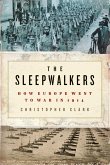Officially credited with 80 air combat victories, Manfred von Richthofen was considered the Ace of Aces of WWI. Richthofen transferred into the Imperial German Flying Corps in 1915. Just a year later, in November 1916, he claimed his greatest victory: that of the British Ace Lanoe Hawker. Afterwards, Hawker's machine-gun rested above Richthofen's bedroom door. While a distinguished fighter pilot, Richthofen was also interested in aeroplane development, making suggestions to overcome design flaws and championing the Fokker D.VII. Though Richthofen did not survive the war, his legend and all-red aircraft still capture people's imagination over a hundred years later. First published in 1930, Gibbons combines combat reports and press articles with personal letters and survivors' recollections in a powerful, narrative driven account of the life of The Red Knight of Germany. Floyd Gibbons (1887-1939) was the war correspondent for the Chicago Tribune during WWI. At the Battle of Belleau Wood he lost an eye to German gunfire while rescuing a wounded soldier; for this he was awarded the Croix de Guerre. Afterwards he became chief of the paper's foreign service, but went on to become a novelist and radio commentator after being fired.
Dieser Download kann aus rechtlichen Gründen nur mit Rechnungsadresse in A, B, BG, CY, CZ, D, DK, EW, E, FIN, F, GR, H, IRL, I, LT, L, LR, M, NL, PL, P, R, S, SLO, SK ausgeliefert werden.









